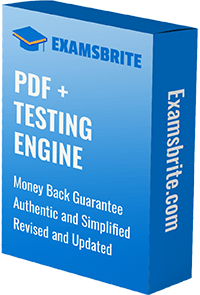
SnowPro Advanced: Data Scientist Certification Exam
Last Update Oct 30, 2025
Total Questions : 65
We are offering FREE DSA-C02 Snowflake exam questions. All you do is to just go and sign up. Give your details, prepare DSA-C02 free exam questions and then go for complete pool of SnowPro Advanced: Data Scientist Certification Exam test questions that will help you more.



What Can Snowflake Data Scientist do in the Snowflake Marketplace as Consumer?
Which one of the following is not the key component while designing External functions within Snowflake?
Performance metrics are a part of every machine learning pipeline, Which ones are not the performance metrics used in the Machine learning?
Mark the correct steps for saving the contents of a DataFrame to aSnowflake table as part of Moving Data from Spark to Snowflake?
To return the contents of a DataFrame as a Pandas DataFrame, Which of the following method can be used in SnowPark API?
Which of the following Snowflake parameter can be used to Automatically Suspend Tasks which are running Data science pipelines after specified Failed Runs?
You previously trained a model using a training dataset. You want to detect any data drift in the new data collected since the model was trained.
What should you do?
Which ones are the type of visualization used for Data exploration in Data Science?
Which of the following cross validation versions may not be suitable for very large datasets with hundreds of thousands of samples?
A Data Scientist as data providers require to allow consumers to access all databases and database objects in a share by granting a single privilege on shared databases. Which one is incorrect SnowSQL command used by her while doing this task?
Assuming:
A database named product_db exists with a schema named product_agg and a table named Item_agg.
The database, schema, and table will be shared with two accounts named xy12345 and yz23456.
1.USE ROLE accountadmin;
2.CREATE DIRECT SHARE product_s;
3.GRANT USAGE ON DATABASE product_db TO SHARE product_s;
4.GRANT USAGE ON SCHEMA product_db. product_agg TO SHARE product_s;
5.GRANT SELECT ON TABLE sales_db. product_agg.Item_agg TO SHARE product_s;
6.SHOW GRANTS TO SHARE product_s;
7.ALTER SHARE product_s ADD ACCOUNTS=xy12345, yz23456;
8.SHOW GRANTS OF SHARE product_s;
Which type of Python UDFs let you define Python functions that receive batches of input rows as Pandas DataFrames and return batches of results as Pandas arrays or Series?